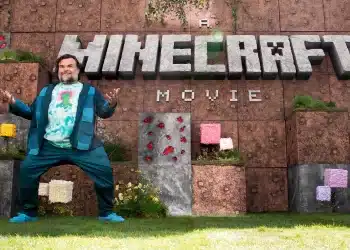Director M. Night Shyamalan seems to spend his life doing two things. Rooting for his hometown Philadelphia 76ers and making physiological thriller films. His latest adventure into the world of psychotic psychosis is titled Knock at the Cabin. His fifth film distributed by Universal Pictures is based on the book written by Paul G. Tremblay but feels more like a modern version of the 2011 science fiction feature, The Cabin in the Woods. It’s definitely not a good start for Shyamalan who has had to battle accusations of plagiarism in the past. The premise of this film is that a family consisting of a homosexual couple with an adopted Korean baby is tasked with the difficult decision to sacrifice one of their own to save the world from extinction. Featuring a cast where Dave Bautista sheds his type-casting past to deliver a soft and emotionally intelligent performance, where Rupert Grint is a Bostonian, and where to my knowledge, Jonathan Groff and Ben Aldridge star as queer characters for the first time in a mainstream film since both individuals came out as members of the LGBTQ community, this film looks to revolutionize a somewhat stagnant genre.
A mixing pot of potential is always a recipe for a film that sticks with you long after you leave the theater. I regretfully can not say this about Knock at the Cabin. The film was very basic in terms of its production. 98 percent of the movie took place at or inside a cabin and the interior shots mainly took place in the cabin’s living room. No issues there, in fact, I think a lot of movies would benefit from such a concept as the lack of multiple locations can lead to powerful dialog/ storytelling. In this film, it doesn’t. The last mainstream movie I watched that employed this concept was Quentin Tarantino’s The Hateful Eight. It was a movie with interesting and deep characters, something Knock in the Cabin attempts but fails to do.
The parents, Eric and Andrew are portrayed as loving and protective yet the first thing we see are two individuals enjoying wine and cheese while letting their daughter roam free in the woods without supervision. We discover Andrew’s past of rejection and anger, a part of why he lacks power and in so purchases a gun to protect himself while clearly not wanting the gun to be around others. A back-and-forth between who he is internally playing a big role in his development and the storytelling process.
However, when the events of this film unfold, it becomes quite clear that nothing is clear and that’s exciting. It’s exciting until the end when it seems like Shyamalan is doing the opposite of what has garnered him much attention, controversy, and fame in an attempt to be original. An ending that leaves audiences both stunned and frustrated in a conclusion that felt underwhelming and not worth the investment in the journey you partook for over ninety minutes.
The Call: Though this film dives into various social themes of queerness, adoption, rejection, and an inability to fit in, none of those themes truly play a major role in this narrative. Though ironic for followers of certain religions that two homosexuals are tasked with saving the world, this movie doesn’t survive off of irony. Not one of my personal favorites but I’d suggest you watch it for yourself. It’s not all bad. Shyamalan’s use of suspense and fear is within reason and palatable for most viewers. It’s natural and without the cheap use of jump scares. The usage of queer actors to play queer characters is a refreshing display of authenticity and representation and these characters aren’t written as queer just to have queer characters. The cinematography is beautiful and the costume design though basic knocks it out of the park with each character. Dave Bautista is the true gem. For someone like me who watched him as a chiseled animal in professional wrestling, watching him transform into a character that has tremendous depth is a testament to his work and range as an actor. However, in the end, it’s the storytelling that counts and to me, it just doesn’t work. 4/10.


 NFL
NFL





